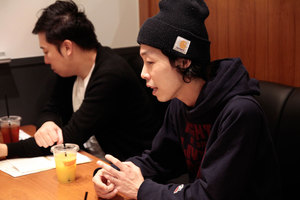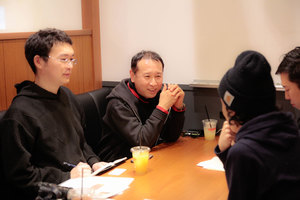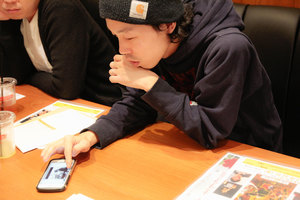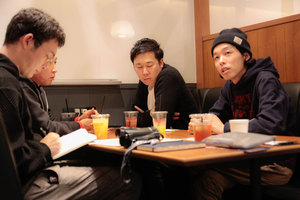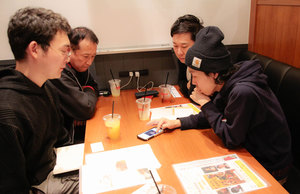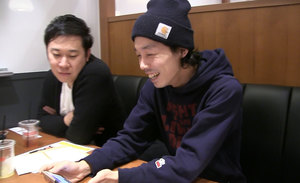I’m staff member Takemori, and I’ve been making a promotional video movie for Scenario Club recently.
But I can’t seem to get it right…
I didn’t realize how difficult it is to make a video…. At times like this, I think it’s time to consult with a professional.
That’s why I’m going to ask you a lot of questions in this interview.
Mr. Shinichiro Ueda, the director of “ONE CUT OF THE DEAD”
I’ll say it again, because it’s important.
Mr. Shinichiro Ueda, the director of “ONE CUT OF THE DEAD”
What is“ONE CUT OF THE DEAD”
An independent film crew was shooting a zombie movie in an abandoned house deep in the mountains. The director, who is looking for the real thing, doesn’t give the OK, and the number of takes reaches 42. Then, a real zombie attacks the film crew! The director is overjoyed and continues filming, but one by one, the film crew is turned into zombies.
“A 37-minute, one-scene, one-cut, non-stop zombie survival film!” This is the story of the guys who shot …….
This “ONE CUT OF THE DEAD”was originally only supposed to be shown for one week in Tokyo, but it was so much fun that it became a topic of conversation everywhere, and the number of screening theaters went from two in Tokyo to 100 to over 300 nationwide, making it an ultra-entertainment film!
It also won numerous awards at the Japan Academy Awards!
Best Editing Award: Shinichiro Ueda
Topical Award, Best Picture,“ONE CUT OF THE DEAD”Award
Best Picture Award – “ONE CUT OF THE DEAD”Best Director Award
Best Director Award – Shinichiro Ueda
Best Screenplay Award – Shinichiro Ueda
Best Leading Actor Award – Takayuki Hamazu
Best Cinematography Award – Go Sone
Best Music Award – Nobuhiro Suzuki, Shoma Ito, Kyle Nagai
Best Sound Recording Award – Kokichi Komoda
In addition, it is a monster work that has won numerous awards not only in Japan but all over the world. Incidentally, the overseas title is ONE CUT OF THE DEAD.
Now, Director Ueda is not just suddenly famous, he’s a man who’s about to hit the ground running!
I’m trembling like a little animal, wondering if it was really a good idea to ask him to do this…
I almost sent him an e-mail, but he said “OK” and agreed to do the interview even though he was extremely busy.
When I was given the OK to do the interview, I honestly thought, “Is this a dream?
So this time, I met Director Ueda together with Mr. Seike (He is an actor) and asked him a lot of questions…!
This is Director Ueda and his manager, Mr. Suzuki.
Here is the table of contents for this issue!
<Contents〉
- Director Ueda’s storyboard
- How old was Director Ueda when he started filming. How about the editing time and software used for“ONE CUT OF THE DEAD”?
- How is the stage different from film?
- Director Ueda’s own ideas when shooting a film
- The composition of the movie and the relationship with the staff
- Script stock and framework
- Favorite directors, films, and genres
- Fun moments in filmmaking
- Director Ueda’s advice on moving images
- Summary
Director Ueda’s storyboard
Thank you very much for agreeing to be interviewed today…!
My first question is, when I make a movie, I am amateur so when I draw a storyboard sometimes I can’t shoot the movie according to the storyboard, or when I shoot it, I feel like it doesn’t look like this, or the image is completely different.
What does the director do in such cases?
Ueda
I don’t draw storyboards.
Takemori
What?
Ueda
I started making independent films with a Handycam when I was in junior high school, and my friends and I used to shoot trivial things every day.
We filmed every day with our friends, just shooting what we thought of, without storyboards.
Then, there was a period of time when I didn’t make any films from the age of 20 to 25, and when I was 25, I started the film production group “PANPOKOPINA” and started making independent films in earnest, and that was the first time I drew storyboards.
There was a time when I drew them for a while, and depending on the film, some of them were drawn. And now, I don’t draw them.
When I write a script and storyboard it before shooting, I get ideas like, “I have this idea, I have this position, and this is how it could play out. Sometimes that can change the scenario itself.
That’s why storyboards are effective before shooting, but when you’re shooting, you’re constrained by the storyboard, and it’s hard to make use of new ideas that come up on the spot.
Now, when I write a script, I write the outline in a form similar to a storyboard. I also write my own scripts.
In other words, for example, in the scripts top line
First line: “A woman’s crying face.
And
The second line, “A crying woman is standing in front of a railroad crossing.
If you write “a woman’s crying face” in the first line and “a crying woman standing in front of a railroad crossing” in the second line, you get the image of “a close-up of a woman’s crying face, followed by a scene of a railroad crossing.
That’s how I wrote the script.
“A crying woman is standing in front of a railroad crossing.
But I think, “I’d like to have a single cut of the woman’s face,” so I often put it into the script.
Takemori
I see. ・・・・
Ueda.
I think it’s also important that I do the editing myself.
I can visualize what kind of cuts I need to make.
I can visualize what kind of cuts are needed to make the film work. I can say, “I’ll do this set-up, take a pull shot, take a closer shot, and shoot this two or three times.
Also, Mr.Sone, the cameraman who worked on “ONE CUT OF THE DEAD” has been working with me for a long time. So now, he does the set-up on the spot, and we decide on the spot. Its like, “Take this picture, and do it like this.
Takemori
I see… I’m learning a lot…
Director Ueda is talking seriously.
-
How old was Director Ueda when he started filming. How about the editing time and software used for“ONE CUT OF THE DEAD”?
Takemori.
Perhaps this has already been asked in various places, but how long did it take to edit “ONE CUT OF THE DEAD”, how much material did you shoot, what editing software did you use, and how many videos did you start shooting?
Ueda.
Editing for“ONE CUT OF THE DEAD”I don’t know exactly how many hours I spent editing the film, because I did most of the work on my old Mac at home… The film was cranked up on July 1st, and the preview for the people involved was on October 15th, so I was working for three months and editing when I was free.
The software I used was Final Cut Pro7.
I think a lot of people are using Adobe premiere now.
Takemori
I see…!
I like After Effect, and I can’t stop myself from doing things like rotating the image around and making it glow with a bang.
Ueda
When I first started learning, I used those effects too.
In the end, it becomes simple. I want to create by accumulating cuts.
Takemori
(I’m wasting a lot of time…)
Ueda
Also, the amount of footage shot for“ONE CUT OF THE DEAD”it took 8 days to shoot, and 2/3 of it was in abandoned buildings. There were very few night scenes in the film, and I was only able to shoot from 6:00 in the morning until 18:00 in the evening, so I had to cut some parts, but I don’t think I shot that much.
Takemori
I thought we had to take a lot of shots and fit them into an hour and a half time frame…
By the way, how old were you when you started filming?
Ueda
When I was in junior high school and high school, we would get together after school and ask, “What are we going to shoot today?”Let’s shoot something like this I saw in a movie the other day! We would shoot until the sun went down.
And then we’d end it in the middle of the day, and the next day we’d say, “What do you want to shoot? And then the next day, “What do you want to shoot? It was like that.
Rather than that kind of film, we shot something like a film, something that aimed to be a film, and even a comedy.
Takemori
100 films in junior high school and high school: ・・・・ Wow…
Ueda
It was in high school that I first made a real film. At the school festival, the class would do a haunted house. Our class would make a film every year.
I made a 30-minute short film in my first year of high school, a 60-minute film in my second year of high school, and a 120-minute war film in my third year of high school, so I guess those were the first films I made.
Takemori
In high school, I made a full-length film: ・・・・
Ueda
From the age of 20 to 25, there was a period of time when I took a break from film, and when I was 25, I started a film production group, and that was in 2010.
From then until 2017, I shot my own films. My wife is a filmmaker and animator, so I was her editor and producer. I also worked for my own organization as a scriptwriter and producer for films directed by other staff members.
Takemori
I see…
-
What is the difference between stage and film?
Takemori
By the way, have you ever directed a stage play in addition to a film?
Ueda.
I have directed a short stage play of about 30 minutes and another of about an hour and a half.
When I was in high school, I made a film for the school festival, and at the end of my second year of high school, I was scouted by a teacher from the drama club, who asked me to write and direct the play.
Up until then, our drama club had always failed to qualify for the regional competition, but when I wrote and directed, we came in second place in the Kinki region.
To tell the truth, I didn’t know much about the stage, so I used a cinematic style with lots of scene changes, which was very popular because it was rare in high school theater at that time. But from a directing point of view, I think there is a difference between stage and film.
Seike
Acting itself is also different between stage and film.
In the case of video, the eyes are important, but in the case of stage, it depends on the size of the theater.
On the other hand, on a stage, it depends on the size of the theater. In a small theater, eye movements alone are enough for a performance.
Ueda
The difference may be in the lines of dialogue on stage, but I think the line of reality is different.
On stage, the line of reality is lower than in movies because there is a premise of “lie” that is played by the actors in front of you.
For example, if you say on stage that there is a universe in front of you, the audience accepts that there is a universe in front of them. But in film, you can’t do that.
Also, the parts that can be cut off are different. In the case of film, you can focus on what you want to see, but on stage, you have to guide the audience’s gaze with the actors’ words and lines of movement, so that’s different.
Also, it’s difficult to say in general, but I think that in the case of the stage, most of the messages are directed towards the audience. But in the case of film, the moment you start acting to the audience on the other side of the camera or screen, it becomes a lie.
This is especially true for comedies. If you look down and see the person in front of you doing a serious play, you’ll think its funny, but the moment you try to make the audience behind the camera laugh, it slips.
Takemori
I didn’t know that. ・・・・
-
Director Ueda’s own ideas when making a film
Takemori
The third act of“ONE CUT OF THE DEAD”
I thought that the third act of“ONE CUT OF THE DEAD”was similar to backstage of a play!
You can’t stop the performance, so I thought it was interesting that the slapstick was similar to that.
Ueda
I think it also depends on the theater company, but in the case of the stage, I think they try to deliver the same quality every time as much as possible. Of course, the amount of heat may change from one performance to the next.
In the case of film, I try to develop the script as much as possible, rehearse it many times to solidify it, and then shoot it with the intention of destroying it on the set.
I’m filming fiction, but the actors are falling and falling and falling. I want to put a load on the actors and mix in a document that can never be shot again. I think that kind of thing is hard to achieve on stage.
Seike
In the rehearsal, we say, “That’s interesting, let’s use it! But if you keep working on it, you end up with a performance that is made up. In that sense, I’m jealous of video. You can use what comes out at the first shot as it is.
Ueda
Yes, that’s why it becomes difficult if the first take is not OK.
The second take becomes a “tracing play,” so I try to say something in the second take. I try to add new elements.
Takemori
Even if the trouble was interesting, the more takes you do, the more it becomes a set-up…
Ueda
As you know, one cut of “ONE CUT OF THE DEAD” was shot in six takes, and the sixth take was used for one cut of the film.
The blood on the lens was a serious problem, and there was also a part where the zombie make-up came out late and we had to improvise. Because of these troubles, there is a real documentation of the actors. On the other hand, the fifth take went perfectly, without any problems at all. But it wasn’t so good, so I asked them to do it again.
I try to harden, harden, and break as much as possible.
If there is a solid rail in the process of hardening, even if it derails a little, it will come back. It’s no good if there are no rails, though (laughs).
When I make the rails, and then derail, or go out of line, something interesting comes out that I can never shoot again. But because there is a rail, you can come back to it.
That’s what I think about at the casting stage. I put a lot of stable people with stage experience and careers in “ONE CUT OF THE DEAD”. By including people who are not stable in their acting, it becomes like a documentary for the others. In this way, I try not to make the play too rigid.
In that sense, it is probably best to draw the storyboards I mentioned earlier, but not to see them on the set.
I’ve been working with Sone, the cameraman, for a long time now, and I’ve been working as an independent filmmaker for a long time, so I don’t always have time to write storyboards.
But when I’m writing a script, I have a rough idea of the images in my head, and I tell the cameraman about them at key points.
-
How do you compose the movie and what is your relationship with the staff?
Takemori
When I’m making a movie, I don’t know how to compose it…
Ueda
There are times when I write the script with an image in mind, such as “I think I should shoot like this” or “Let’s do a 360-degree camera roll here,” but I don’t make any decisions until I see the actors in action.
It’s impossible to predict how the actors will behave.
I used to write a lot of “brackets” in the script.such as “laugh” or “stand up.
Now, I write the first draft in order to understand and organize my flow, but I often erase it before handing it over.
I’m afraid that by writing in parentheses, I’m destroying the possibilities.
I have my own image of what I want to do, but there may be times when I can get a better shot if I don’t laugh in a scene, so I try to be flexible.
Seike
Do you ever feel disappointed when an actor surpasses the image you have in your mind, or when you feel that the actor has surpassed me?
Ueda
There are many times when I surpass my own image.
When that happens, I’m happy. (laughs).
Many of the cameramen and sound recorders on my set have done it many times, so the sound recorders sometimes tell me, “This actor’s performance should be like this.
If I think it’s right, I say, “Yes, it is! If I think it’s good, I’ll say, “Yes, it is!
The most important thing is to make the work interesting, and since I’m the one who decided to use this recording person, cameraman, and actors, when everyone exceeds my image, I think, “That’s my credit! I think. (laughs).
(laughs).
(laughs) I try to get as many people as possible who are better than me.
-
Script stock and frameworks
Seike
You write screenplays, but do you ever shoot other people’s screenplays?
Ueda
I rarely do, but I have done a 10-minute VR film of a manga work.
Seike
I think it’s an amazing talent to be able to direct and write a book, but when you write a book, do you just squeeze it out or do you have a lot of stock?
Ueda.
Before I got busy, I had a lot of projects in stock. Now, thankfully, I’m getting a lot of offers. But I can’t think of what I want to do so quickly, so I just start working when I’m given a subject and a deadline. (laughs)
Seike
When you’re given a deadline, you’re trapped, aren’t you? You have a fixed schedule.
Ueda
Actually, the hardest part is when someone says, “Ueda, you can make anything you want. It doesn’t matter how long it takes.
Seike
That’s what everyone says, isn’t it? If you’re not pressed for time, if you’re told that you can do whatever you want, you won’t be able to come up with anything.
Ueda
That’s right. There are some projects that I start by saying, “I want to do this,” but most of the time I’m given a subject and a deadline, and then I start writing, and as I’m writing, I start thinking about what I want to do with this piece.
The two of them get excited talking about deadlines.
Ueda
But I think a script is a “drawer”.
A story can be written in any way you like. I can recommend countless directions.
I have been watching movies since I was a little boy, and when I was an adolescent, I was exposed to Hollywood movies. Entertainment has a certain pattern to it. For example, the three-act structure.
First, the main character’s daily life is depicted, and at about the 25-minute mark, the first turning point comes, and then the film moves into the extraordinary, and at about the 75-minute mark, it climaxes. Many Hollywood films follow this structure. For example, in a sports movie like Rocky, the training takes about 60 minutes.
And when you look at the time code, if something doesn’t happen in the 25 to 35 minutes, it becomes hard to watch as entertainment.
Takemori
I didn’t know there was such a frame. ・・・・
Ueda
Also, there are “external goals” and “internal goals”.
External goal = “defeat terrorists”, “defeat sharks”, and so on.
Internal goal = “how the main character grows through the story”.
It’s beautiful when the external goal and internal goal cross the finish line at the same time.
For example, if the main character is unable to shoot a gun due to trauma, the external goal and internal goal are simultaneously accomplished by “overcoming the trauma and defeating the terrorists. This is the basic style of Hollywood movies.
In the movie “Jaws,” the policeman is not good at sea, but when he wants to defeat the shark, he jumps into the sea. In other words, he cuts the goal tape of overcoming his trauma and defeating the shark at the same time.
In Hollywood movies, they often follow that kind of format.
I’ve been exposed to it so much that it’s ingrained in my body, and I came to portray the film that way before I read the theory in a book. I naturally created a three-act structure with an internal goal and an external goal.
-
What are your favorite directors, films, and genres?
Seike
Do you have a favorite director?
Ueda
There are many.
Quentin Tarantino, Matthew Vaughn, James Gunn, Paul Thomas Anderson, Clint Eastwood, Steven Spielberg, Woody Allen, Stanley Kubrick.
I like old American romantic comedies and screwball comedies from the 50’s or so. Directors like Billy Wilder and Howard Hawks.
Romantic comedies
A typical story is: “A man and a woman meet, but they don’t like each other because they don’t make a good impression on each other when they first meet, and they quarrel every time they meet after that. However, when they encounter a situation that requires them to work together and cooperate, they get to know each other better and become attracted to each other. They have a hard time expressing their feelings to each other, but in the end, they get together and have a happy ending.
Screwball comedy
Screwball comedy is a comedy film made in Hollywood from the early 1930s to the 1940s. The main characteristics of screwball comedies are a love romance between a man and a woman who live in different worlds, unconventional characters, fast-paced dialogue, and a turbulent story in which one incident after another occurs.
I know it’s a bit of a cliché, but in movies, there are movies like “The Apartment” and “To Be or Not to Be”.
In Japan, there are not many slapstick screwball dry comedies like that.
If anything, they make it moist. In Japan, “crying” is stronger in movies.
There are many directors who like Japanese films. It depends on the era, but I love Shunji Iwai, Kiyoshi Kurosawa, and Takeshi Kitano.
When I was in my early twenties, I liked Koki Mitani the most, and I really liked the movie “Welcome Back Mr. McDonald”. And I like the stage even more.
Seike
“Welcome Back Mr. McDonald” and “ONE CUT OF THE DEAD” have something in common, don’t they?
Ueda
Thankfully, “Welcome Back Mr. McDonald” is sometimes referred to.
In the case of “ONE CUT OF THE DEAD”I packed a lot of things I wanted to do in it.
I wanted to do backstage stories like “Welcome Back Mr. McDonald”, “Day for Night”, “Kamata March”, etc. I also liked horror and zombie movies, so I wrote “Night of the Living Dead” and “The Reaper”.
Three of my favorite horror movies are “Night of the Living Dead,” “The Evil Dead” and “The Texas Chain Saw Massacre” all of which are classics, and all three are debut films with low budgets and unknown actors and all of them are filled with the kind of energy and impulse that you can’t get again, and because they didn’t have money, they have a very handmade feeling. I really liked that, and I wanted to do that “non-A-grade horror zombie element.
I also like Tarantino’s “Pulp Fiction,” “The Kirishima Thing,” and “A Stranger of Mine,” where the time axis moves back and forth. I’m trying to put all the things I like into “ONE CUT OF THE DEAD”.
-
What are the fun moments of making a film?
Takemori
Can I ask you about the most enjoyable time when you are making a film?
Ueda
Well, I’m often asked that, but I think it’s all of them.
When I’m writing a script, there’s the fun of writing a script, when I’m on set, there’s the fun of being on set, and when I’m editing, there’s the fun of editing.
But if I had to choose just one, I’d say on-set.
I used to work as an indie writer and editor, so I spend a lot of time working alone. It’s not so demanding to say, “I have to finish by what time?
But when you’re working on site, there’s a lot of pressure, like, “I have to finish by sunset,” or “I have to finish by what time,” or “It’s starting to rain, but I have to take this shot today. So what do we do? What should I do then? I like to think and create under such load.
There are times when I think, “Yes! (laughs)
Seike
Are you glad that you had trouble in the end?
Ueda
Like the blood that was spilled in“ONE CUT OF THE DEAD”is another example.
In another example, it was freezing cold and snowing during the shooting, so we couldn’t do the play.
But it was a scene where we were talking face to face, so I knew that if I relaxed, they would “act”.
It was so cold that they couldn’t afford to act, which made the scene look very realistic, and the snowfall made it even better.
I believe that there is only so much that a person can think of at a desk.
In other words, there are a lot of interesting things that happen when something goes wrong and there is a chemical reaction between the “known elements” that we think about.
-
Director Ueda’s advice for the video
Takemori
Actually, I have a video that I made, so may I ask you to watch it, if only for a moment?
Director Ueda is reviewing the video I made over and over again. I’m really nervous…
動画
Ueda
Did you make this?
Hmm, I see…
Takemori
What do you think? ・・・・!
Ueda.
I think it would be better to simplify this a bit more.
When you’re just starting out, you get greedy. I want to add this shot and that shot. Then I think, “I’ll make this black and white.
This video is in black and white and in color. It would be nice if you could make it more balanced, but what are you aiming for?
Takemori
The black-and-white and color are meant to be a contrast between “being on stage” and “everyday life”…
Ueda
I don’t think that was conveyed at a glance.
It would be good if it were seamlessly connected, and if you showed a pull-out from the stage somewhere, it would be clear that this was a pull-out from the stage.
Just write down what you’re told!
Ueda
To be more specific about the point, in this video, if the timing of the subtitles and the timing of the people taking action are in conflict, you won’t know which way to look. Looking at the words is a lot of work, isn’t it? The characters need to be shown at a time when the viewers don’t need to look at the pictures.
Also, from an emotional point of view, it’s easier for me to get emotionally involved in a story if the main character is holding his head rather than smiling when he says, “I want to get better.
Basically, in a story, we get emotionally involved when the main character hits a wall, struggles, or is troubled, so it’s better not to smile.
Also, you can tell that the filming is being done in a room with a set-up. So, I think it’s better to be behind the stage with your head in your hands.
It might be difficult, but I think it would be better to structure the whole thing as a documentary.
Especially the black-and-white part, it needs to be structured quite well. It makes it look cheesy.
It’s also important to know where to put the music.
Director Ueda gives me advice after watching the film several times…!
Takemori
I learned so much from him…!
By the way, did you use this kind of Handycam in the beginning when you were shooting?
Ueda
Basically, I still shoot movies with one camera.
I think most movie studios use a single camera. TV dramas use multiple cameras, though.
A play is repeated many times. The same scene is repeated again, but from a different angle.
However, I don’t know what to say about that, either.
For example, when you want to shoot an emotional exchange, if you pull the camera out the first time, you might end up showing all the emotions in the second or third time, so you have to take a closer shot the first time.
Takemori
I wonder if the only way to get better at making videos is to make, make, make.
Ueda
Yes, I think so. In any case, you have to watch a lot of movies and other visuals, and what you have seen will accumulate into thousands of images, strengthening your unconscious and making you understand things with your senses that you cannot verbalize. I think the best thing to do is to watch a lot, do a lot, and do a lot of trial and error to quickly find your own 100 points.
Takemori
I’m overwhelmingly lacking in trial and error…
-
Summary
So, Director Ueda gave me some of his precious time, and I got to hear a lot of really valuable things from him!
When I met and interviewed Director Ueda in person, he talked about various episodes in a very happy way.
Director Ueda has a “boyish innocence” and a “charm and human power that attracts people”, and I’m sure he enjoys shooting his films on set.
He loves movies and has been watching them so much that the methods of Hollywood are subconsciously ingrained in his mind, and through an overwhelming number of trials and errors, he was able to create the mega-hit “ONE CUT OF THE DEAD”I was keenly aware that this was the result.
It was not by chance or good luck, but because Ueda, a director with the heart of a boy who really loves movies, experienced many trials and errors, and enjoyed filming from the bottom of his heart, he was able to capture the glory.

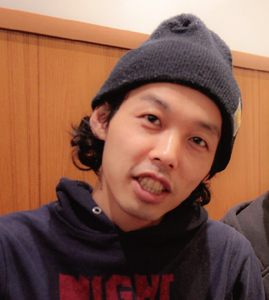
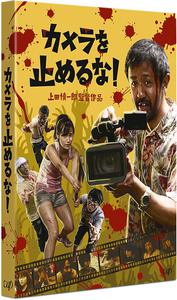
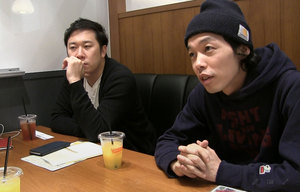
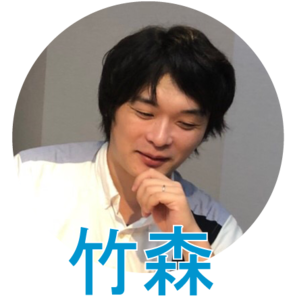 Takemori
Takemori